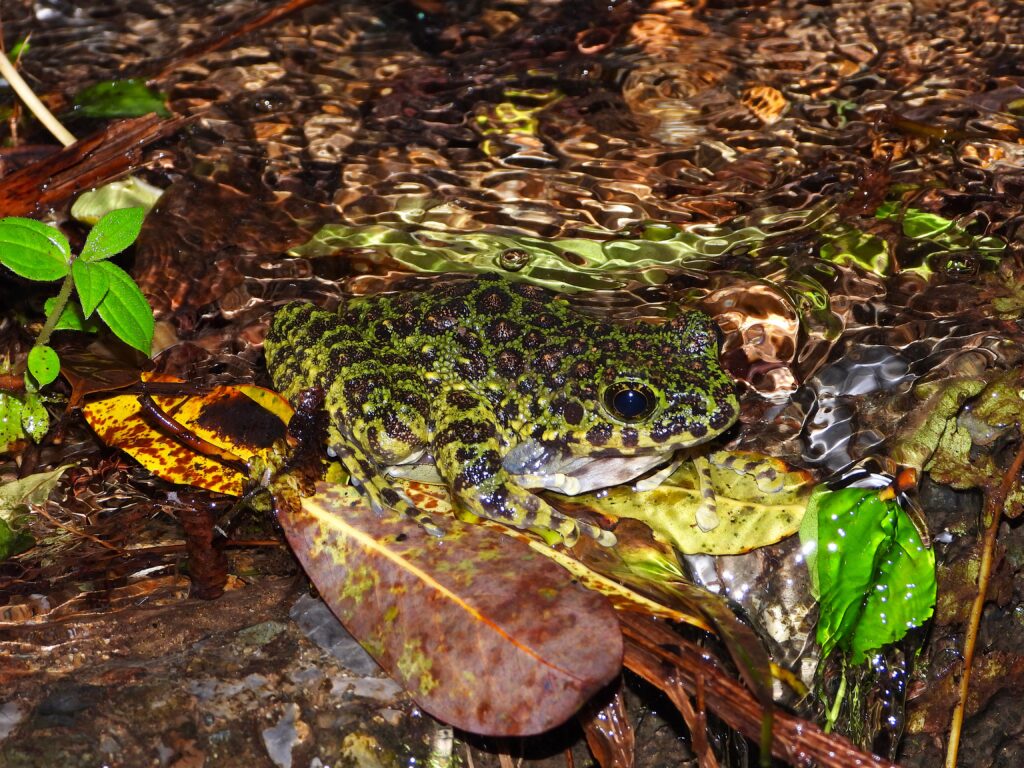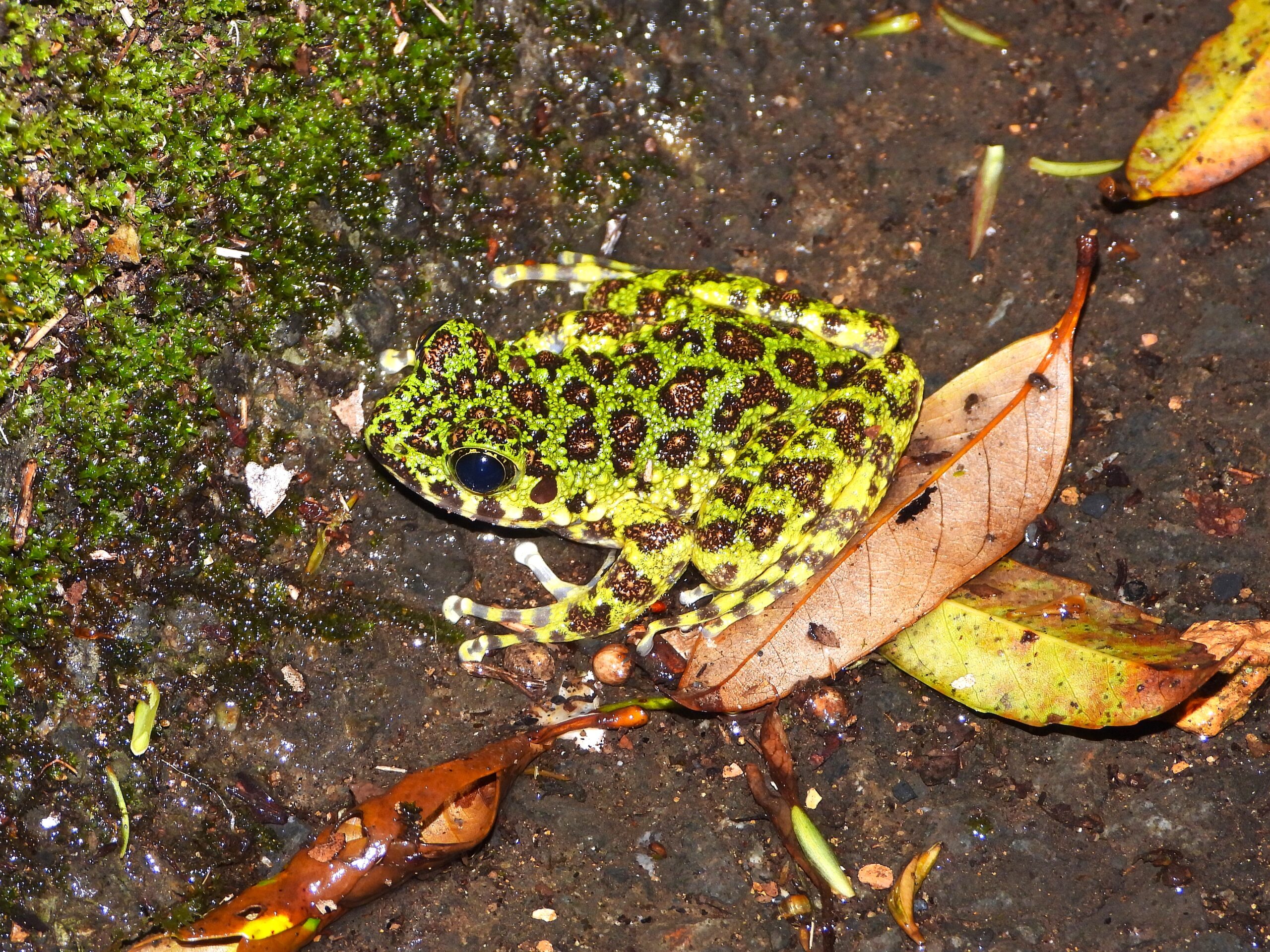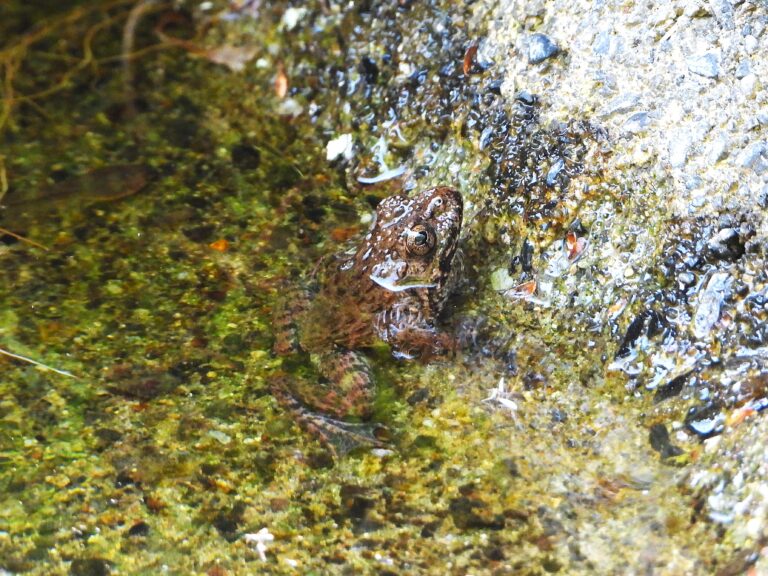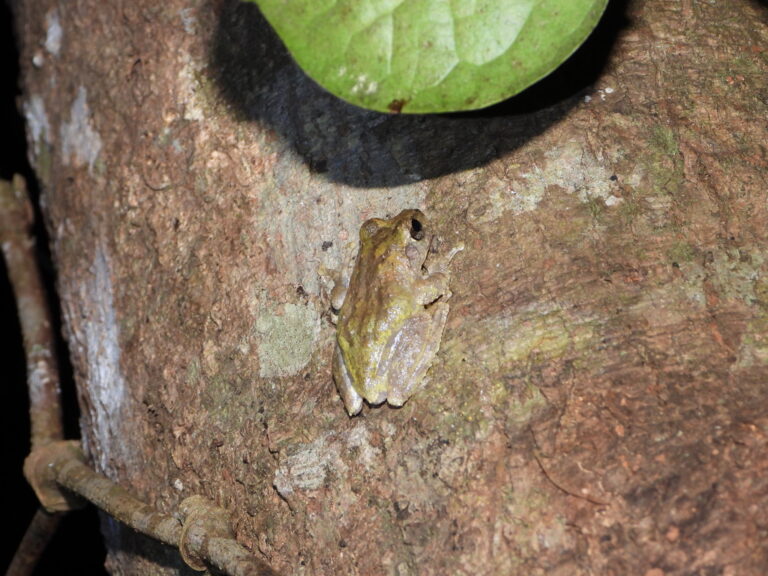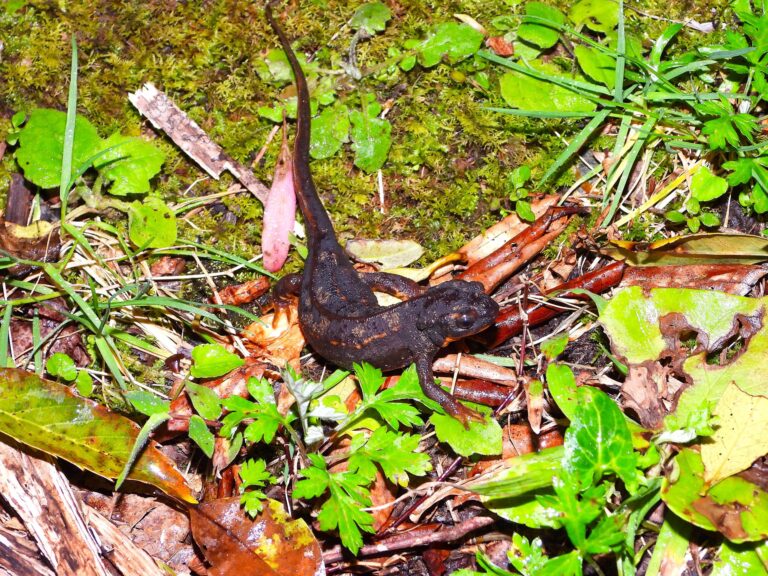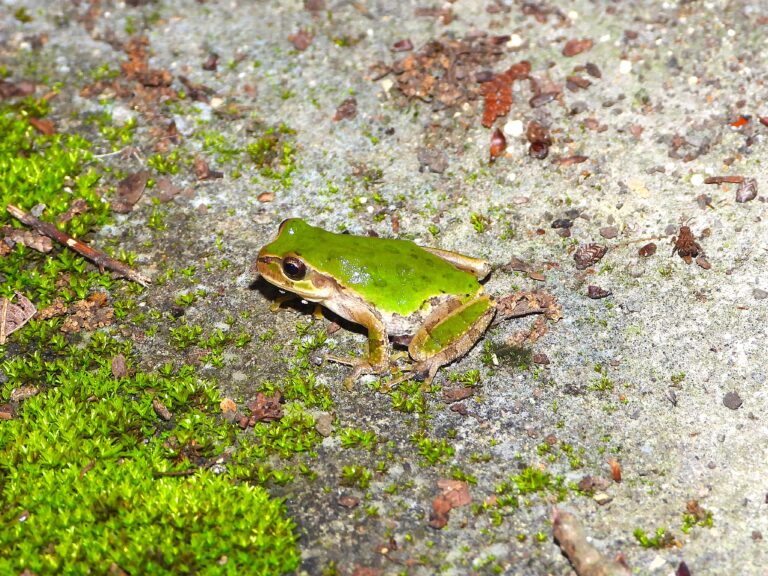Amami Ishikawa Frog (Odorrana splendida) – Wildlife of Japan
Introduction
The Amami Ishikawa frog (Odorrana splendida) lives only on Amami Ōshima Island in southern Japan. Its vivid green color and complex patterns make it famous among herpetologists. People sometimes call it “Japan’s most beautiful frog,” though this nickname is informal. Because it inhabits only one island, any change to its environment can quickly affect its survival.
Appearance
This frog is quite large for a stream species. Males grow to about 7–11 cm, and some reach over 12 cm. The back shines bright yellow-green with irregular brown or golden blotches edged in black. Its body looks slightly flat, and the skin feels rough with many small bumps. The frog’s wide toe pads help it cling to slippery rocks along rushing mountain streams. Therefore, its shape and color suit its habitat perfectly.
Habitat & Distribution
The Amami Ishikawa frog occurs only on Amami Ōshima Island in the Ryukyu Islands of Japan. It does not live on Tokunoshima or any other nearby islands. It prefers mountain forests with evergreen trees and clean, shaded headwater streams. The frog hides among mossy boulders, roots, and wet rocks near waterfalls. In addition, it needs undisturbed forest environments with stable water flow to survive.
Behavior
During the breeding season, males call from rocks or stream banks to attract females. Their call is a sharp, high “kuo” sound that echoes through the forest. They usually choose places with flowing water rather than still pools. After the season, the frogs stay hidden among leaves and stones. They become active at night, especially after rain. This nocturnal behavior helps them avoid predators and dry conditions.
Diet
The Amami Ishikawa frog feeds mainly on insects, worms, and other small invertebrates. It hunts along wet rocks and leaf litter near streams. Field observations suggest it eats whatever small creatures are available. In short, it is an opportunistic insectivore adapted to the mountain forest floor.
Reproduction
Breeding takes place from February to April. Females lay several hundred to about one thousand eggs inside small rock cavities beside streams. Moist air keeps the eggs from drying out. The tadpoles live in running water and grow slowly. Many spend the winter in the stream and transform into small frogs the following year. Therefore, their larval stage lasts longer than in most Japanese frogs.
Conservation
The Amami Ishikawa frog appears on Japan’s national Red List as Endangered (EN). Japanese law also protects it as a domestic rare species. Major threats include logging, stream alteration, road construction, and water pollution. In addition, mongooses introduced to the island prey on the frogs. To help this species, Japan enforces strict protection laws and monitors its population. Forest preservation on Amami Ōshima remains the key to its survival.
Author’s Impression
The Ishikawa’s frog truly deserves its reputation as Japan’s most beautiful amphibian. Everyone who visits Amami should try to see it once in their life. After rain, you might find one on a forest road or near a clear mountain stream. Its emerald-green body glowing against wet rocks is an unforgettable sight.
